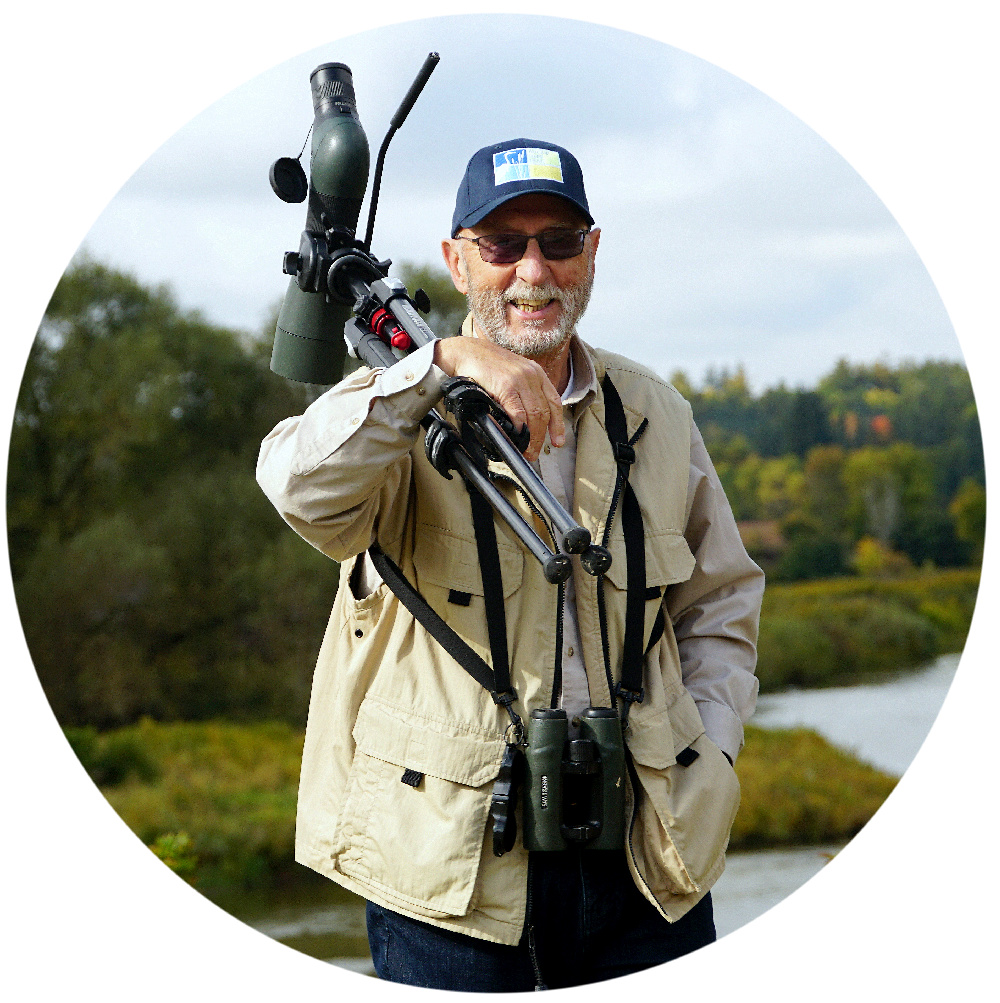It sounds as though the record is stuck on the turntable I know, but due to government-imposed lockdown in the Province of Ontario, we are not venturing far afield. There is much of interest to be found locally, however, so please join me to look at what we have been seeing in the Kitchener-Waterloo area.
03 May 2021
In our backyard, Waterloo, ON
American Robin (Turdus migratorius) is an exceedingly common species, and it is rarely that we glance out the window without seeing up to three individuals in the yard, including this interesting bird displaying signs of leucism.
It seems to enjoy our company for it puts in an appearance several times a day - or do you think it might just be for the food?
04 May 2021
Laurel Creek Reservoir, Waterloo, ON
The marshes are filled with Red-winged Blackbirds (Agelaius phoeniceus), with ardent males competing with each other to woo more than one female, for this is a highly polygynous species. I suspect that the handsome fellow below will do well in the courtship games.
Wilmot Township, Region of Waterloo, ON
While driving, I spotted a couple of Turkey Vultures (Cathartes aura) in a field, evidently keenly interested in something, likely carrion. I was unable to detect what captured their attention, but when I stopped to take a picture one bird moved off a short distance while the other stayed put.
05 May 2021
In our backyard, Waterloo, ON
A male Red-bellied Woodpecker (Melanerpes carolinus) is a regular at our feeders, generally stopping for a quick snack before moving on.
05 May 2021
Conestogo, ON
A pair of Bald Eagles (Haliaeetus leucocephalus) has bred successfully for several years in a large nest in a large tree alongside the Conestogo River, almost in town, in fact.
We were unable to view any activity at the nest, which becomes harder to see as the trees leaf out, but one of the pair was perched on a nearby snag.
Caspian Terns (Hydroprogne caspia) have returned to grace our waterways and we saw our first individual of the year patrolling up and down the river, plunging in to capture fish, to great success based on our observation.
RIM Park, Waterloo, ON
Northern Flicker (Colaptes auratus), unlike most woodpeckers, feeds primarily on the ground, searching for ants.
It is not often that we see Northern Cardinal (Cardinalis cardinalis) on the ground but this male seemed to have business there.
As sometimes happens, Miriam and I had no sooner finished saying to each other that we had not seen our first Rose-breasted Grosbeak (Pheucticus ludovicianus), when, as though on cue, we heard one sing - and there it was!
Our skills as botanists are rudimentary, but improving, happily, and you will indulge me I am sure while I present a few woodland plants.
Is a Downy Yellow Violet (Viola pubescens) not guaranteed to put a smile on your face?
Common Blue Violet (Viola sororia), also known as Wooly Blue Violet, is found in colours ranging from purple to white.
There are several species of Wood-sorel (Genus Oxalis) dotted throughout the woodlands of southern Ontario, and this is one of them. Based on the many references I have consulted I think it is Oxyalis griffithii. Confirmation would be welcomed.
Fawn Lily (Genus Erythronium) was not hard to spot, and is a delightful component of a woodland stroll.
Cut-leaved Toothwort (Cardamine concatenata is a classic plant of moist woodlands, always a joy to locate and emblematic of the habitat.
My trivial and superficial journey into the world of plants will bring you pleasure, I hope; it does for me as I search, discover and learn, but if you wish to get to know a talented botanist, overflowing with knowledge, a dedicated environmentalist with a first rate blog, please visit my great friend Juan Tarrero Sarabia here.
Some of you will perhaps remember the impressive fence I featured on an earlier blog. I think a male Song Sparrow (Melospiza melodia) found it equally impressive as a perch from which to serenade any passing female whose interest he might be able to capture.
In our backyard, Waterloo, ON
All winter long we were visited by both White-breasted Nuthatch (Sitta carolinensis) and Red-breasted Nuthatch (Sitta canadensis). The white-breasted seems to be seeking its fortune elsewhere, but the Red-breasted Nuthatch still comes to our feeders, often flying off with food, so perhaps there are young mouths to feed.
Blue Jays (Cyanocitta cristata) are nothing short of ubiquitous this year and at times there are as many as ten in our yard.
I am sure you will vicariously share in our joy at having so many of these wonderfully attractive birds visit us.
A couple of days earlier we had set out oranges and grape jelly in anticipation of the arrival of the first Baltimore Oriole (Icterus galbula) so we were elated to see this handsome male arrive.
07 May 2021
Hillside Park, Waterloo, ON
This is one of the several colour variations of Common Blue Violet.
Ground Ivy (Glechoma hederacea), sometimes called Gill-over-the-ground is common throughout our area.
Birding was in general a little slow, but this Great Blue Heron (Ardea herodias) surveyed the world from a loft perch.
The most disappointing, but very predictable, facet of our walk was to observe, over and over again, the impact of that highly destructive animal Homo ignoramus disgusticus.
Hillside Park is a lovely place, a sylvan urban oasis with a creek running through it. But Homo ignoramus
can fix that in a hurry. Who wants pristine when a shopping cart can be chucked into the stream?
The cart has to be deliberately taken there and equally deliberately tossed into the water, so nefarious intent is clear from the outset.
And let's have a little more trash long the banks.
There are houses alongside the creek through one section, all well-maintained, with pride of ownership visible for all to see. One homeowner had replaced his fence, only to have it bedaubed with graffiti mere days later.
Why the idiots in our society think it's okay to vandalize the property of others is quite beyond my level of understanding. And what satisfaction they derive from doing it I am incapable of figuring out.
By any reasonable measure, by even the least reasonable measures in fact, humans are disgusting, and we are sewing the seeds of our own destruction as we continue to pollute without end, fill the oceans with plastic, decline to mend our ways, and trash every green and pure place we have. We pay taxes for our cities to create and maintain parkland and immediately set about to despoil and degrade it.
I despair that we have shown time and again that we are incapable of change. We know what is happening, we understand the science, the implications are clear, yet we do nothing to mend our ways.
08 May 2021
Lakeside Park, Kitchener, On
Song Sparrow is common as you will have come to realize, but it is a wonderful little bird, and males pour their heart into song, their whole bodies shaking with the excitement of it all.
White Spruce (Picea glauca) has male and female trees, and this female is producing a heavy crop of cones.
Several Myrtle Warblers (Setophaga coronata) were flitting around gleaning insects, and it was hard to focus the camera on them before they moved again. This is not a very good picture but it was the best that I could get.
Our lockdown continues until 20 May, but whether to open up again will be debated before the restrictions are lifted, so look for more local news rather than from any forays farther afield. Oh to be able to travel again!


































































.jpg)
















